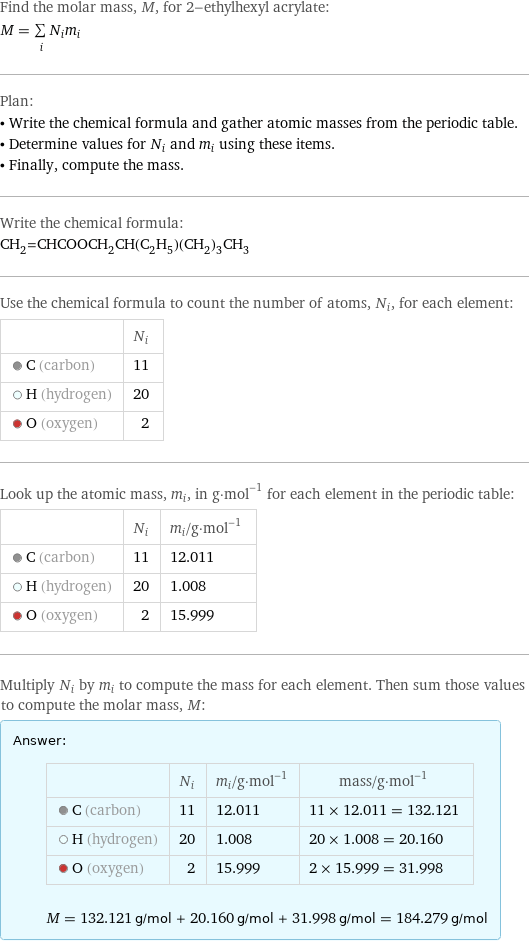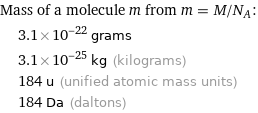Input interpretation

2-ethylhexyl acrylate | molar mass
Result

Find the molar mass, M, for 2-ethylhexyl acrylate: M = sum _iN_im_i Plan: • Write the chemical formula and gather atomic masses from the periodic table. • Determine values for N_i and m_i using these items. • Finally, compute the mass. Write the chemical formula: CH_2=CHCOOCH_2CH(C_2H_5)(CH_2)_3CH_3 Use the chemical formula to count the number of atoms, N_i, for each element: | N_i C (carbon) | 11 H (hydrogen) | 20 O (oxygen) | 2 Look up the atomic mass, m_i, in g·mol^(-1) for each element in the periodic table: | N_i | m_i/g·mol^(-1) C (carbon) | 11 | 12.011 H (hydrogen) | 20 | 1.008 O (oxygen) | 2 | 15.999 Multiply N_i by m_i to compute the mass for each element. Then sum those values to compute the molar mass, M: Answer: | | | N_i | m_i/g·mol^(-1) | mass/g·mol^(-1) C (carbon) | 11 | 12.011 | 11 × 12.011 = 132.121 H (hydrogen) | 20 | 1.008 | 20 × 1.008 = 20.160 O (oxygen) | 2 | 15.999 | 2 × 15.999 = 31.998 M = 132.121 g/mol + 20.160 g/mol + 31.998 g/mol = 184.279 g/mol
Unit conversion

0.18428 kg/mol (kilograms per mole)
Comparisons

≈ 0.26 × molar mass of fullerene ( ≈ 721 g/mol )

≈ 0.95 × molar mass of caffeine ( ≈ 194 g/mol )

≈ 3.2 × molar mass of sodium chloride ( ≈ 58 g/mol )
Corresponding quantities

Mass of a molecule m from m = M/N_A: | 3.1×10^-22 grams | 3.1×10^-25 kg (kilograms) | 184 u (unified atomic mass units) | 184 Da (daltons)

Relative molecular mass M_r from M_r = M_u/M: | 184